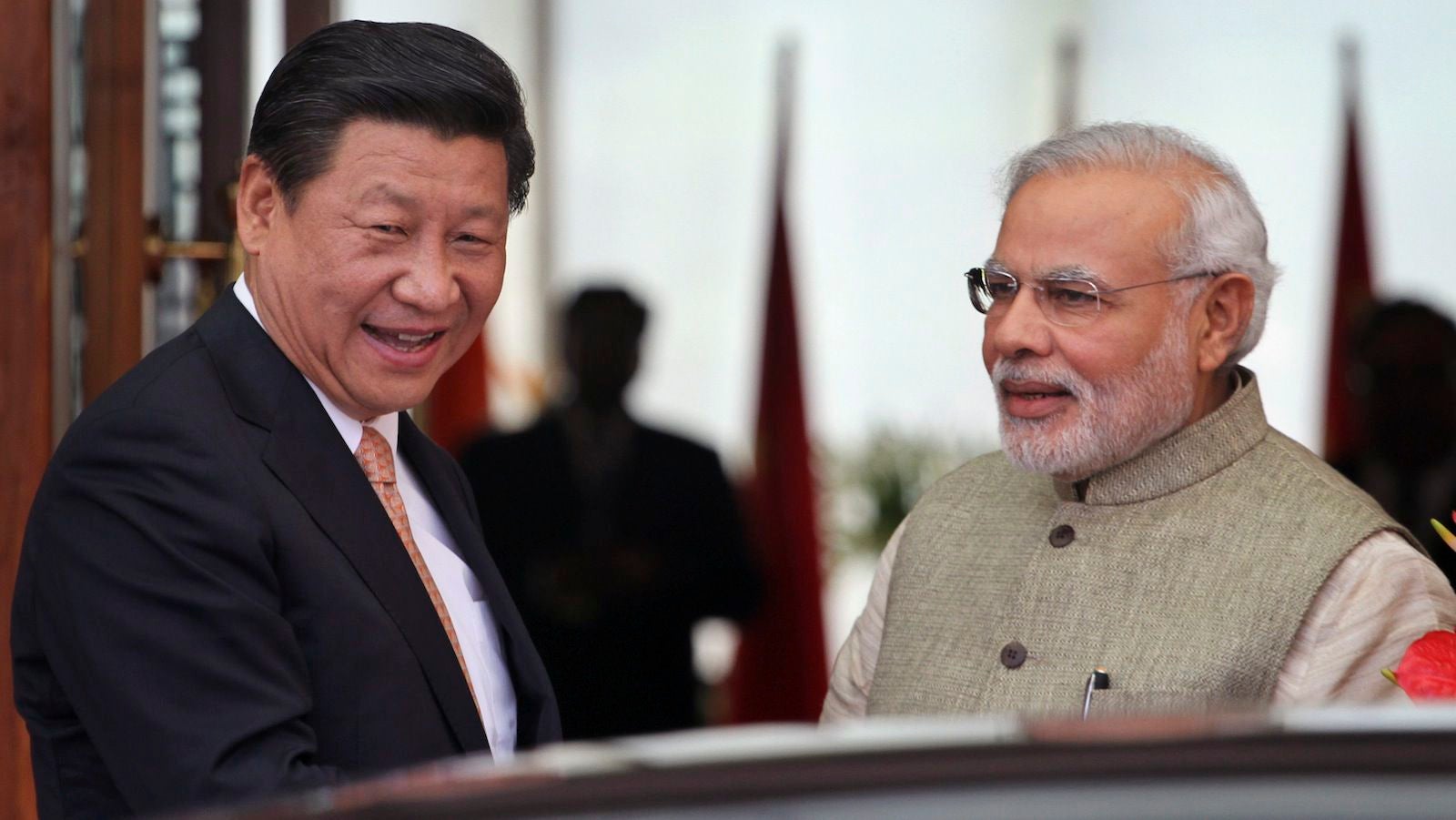Modi and China’s Xi must get along—they have much in common
That exceptional show of affection between prime minister Narendra Modi and Japan’s Shinzo Abe—the Kyoto bear hug—was seen as a strategic embrace, signalling the beginning of a new Asian partnership that could potentially unsettle China.


That exceptional show of affection between prime minister Narendra Modi and Japan’s Shinzo Abe—the Kyoto bear hug—was seen as a strategic embrace, signalling the beginning of a new Asian partnership that could potentially unsettle China.
But in their past glories and present day leadership styles, there is more in common between Modi and Chinese president Xi Jinping, who begins a three-day state visit to India today, than Modi and Abe.
Rough rise
For one, neither had it easy in their early days. Modi’s childhood was spent in a middle-class household in Gujarat, helping sell his father’s tea at the railway station in Vadnagar, about a 100 kilometers away from Ahmedabad, where he will receive Xi.
The Chinese president, though, is a princeling—as relatives of current or former senior Communist Party leaders are known. His father, Xi Zhongxun, was a former member of the Politburo and vice premier, and was a key architect of southern China’s Special Economic Zones. But after his father was purged and imprisioned (paywall), Xi became a “sent-down youth”, one of the millions of young Chinese who were sent to the countryside to work and undergo re-education.
Regional stalwarts
After an early stint in Beijing, Xi earned his political spurs in the provinces. He spent 17 years in Fujian, a southeastern province, where he focused on strengthening relations with Taiwan and bringing in more investments from the island-nation that China does not recognize as a sovereign entity. But it was perhaps his time in the eastern province of Zhejiang that cemented his reputation as a pro-business leader.
Modi, too, spent time in Delhi and elsewhere working for the Bharatiya Janata Party (BJP), though much of his political career was focused on Gujarat. His 12 years as the chief minister of the state, like Xi, paved the foundation on which he subsequently rose to the top of India’s political system. This was also when his pro-business orientation was strengthened, as foreign investors and investment flowed into Gujarat.
No dissent
Having risen through their respective parties, both Modi and Xi have consolidated their hold over organizational power structures. Early in his tenure, the Chinese president launched a wide-ranging campaign to stem corruption at all levels of government, and worked for a “thorough cleanup” within the Communist Party, including doing away with ”formalism, bureaucratism, hedonism and extravagance.” While that has effectively stifled dissent and purged rivals within the party, there has also been an unexpectedly harsh crackdown on Chinese political activists.
The Indian prime minister, on the other hand, used a strong electoral mandate to strengthen his grip over the BJP through a series of appointments that sidelined many of the influential old guard. Within government, Modi has elevated and expanded the role of the prime minister’s office, creating a somewhat centralized system where important ministerial decisions are vetted by him. Although these are yet early days for his government, but Modi does not enjoy a reputation as a man who takes kindly to dissent.
Media controls
If not during his time as Gujarat’s chief minister, Modi’s remarkable ability to manage the media was evident in his prime ministerial election campaign. In his first months in office, the prime minister has been far less forthcoming to the press. He has significantly cut down on the media contingent that has typically accompanied Indian prime ministers in the past, and ministers and bureaucrats have been told to keep their distance from the press. He does not hold press conferences and has not granted a media interview since becoming PM. Modi knows how to make the media do his bidding when he feels the need, however.
Unburdened by the complexities of a multi-party democracy, Xi has had a much freer hand. So, he has, at once, co-opted social media as a powerful propaganda tool (something that Modi, too, knows well), even as the Chinese government has introduced strict controls on social networks and micro-blogging platforms. Simultaneously, state-run media outlets have begun promoting Xi with “a frequency and intensity unseen since the Mao era,” the Washington Post reported earlier this month, while foreign journalists in the country have been facing increasingly difficult working conditions.